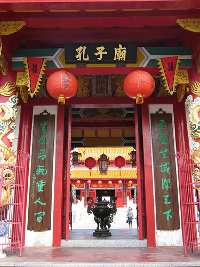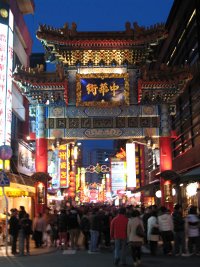Quoted from Noritake Tsuda, A History of Japanese Art: From Prehistory to the Taisho Period, originally published as Handbook of Japanese Art in 1976
Confucianism in Japanese art
Confucianism in Japan has a longer history than Buddhism and has done much for the moral development of the political and social life of the people. During the feudal period, that is, from the Kamakura to the end of the Edo Period, parallel with Zen Buddhism, it had many followers among the military class of people. In different districts there were schools for Confucianism under the patronage of feudal barons.
In Ashikaga, a village 120 kilometers north of Tokyo, was a school of Confucianism; there remains an old temple dedicated to Confucius. In this holy edifice is enshrined a unique wooden statue of Confucius. The figure is dated the year of Temmon (1534). It represents the Sage in advanced age, with a long beard, as he sits quietly. The character and dignity of Confucius is well expressed in the contemplative pose.
MM: One can see from this description of a statue, Japanese in style and Buddhistic in pose and spirit, that Confucianism has been assimilated to Buddhism, if only by the famous Japanese art historian. Though its doctrinal importance is acknowledged, as the impact of Chinese art upon Japanese art always is, Confucius, like the great masters of Chinese painting, sculpture and architecture, are not ranked very high in Japanese eyes.
Partly this is owing to the much greater importance of Buddhism in Japanese culture and art. This entire history of the latter subject scarcely mentions Neo-Confucianism. Perhaps its doctrines were important to the Japanese at one time, perhaps not. If so, one would have expected more emphasis upon Chu Hsi and his fellow philosophers of the Sung. But then very few names of the great painters of Sung, Yuan and Ming are mentioned either.
Confucianism in the context of a non-philosophical culture

